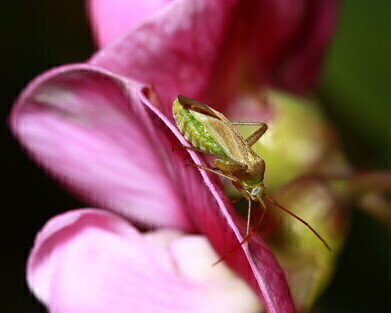GC, MDGC
Electroantennography – Helping Chromatography Control Bugs
Oct 29 2015
Recent introductions like genetically modified crops were meant to solve problems and help farmers increase their yields — unfortunately Mother Nature can sometimes confound science’s best efforts and scientists have to resort to using nature to control nature.
In a recent paper published in Entomologia Experimentalis et Applicata, researchers report on work undertaken to reduce the amount of pests on cotton using pest pheromones — nothing surprising there except that the cotton has already been genetically modified to reduce pests.
One of the key experiments for the study used gas chromatography linked to the antenna of an alfalfa plant bug, Adelphocoris lineolatus (Goeze) — welcome to the world of electroantennography.
Problems in GM cotton
To combat the devastating effects of various pests to cotton, a GMO cotton was developed that was modified to produce an insecticide to larvae of various moths, butterflies and bollworms. The insecticide is harmless to other organisms — which has resulted in an increase of other pests including A. lineolatus — causing a loss in cotton production.
Although pesticides can be used to control A. lineolatus — with the harm they can cause both to the environment and humans — other methods of controlling the pests are being searched for. The analysis of pesticide residues on foodstuffs is discussed in the article, The Need for Speed Applying Triple Quadrupole MS in Pesticide Residue Analysis Fast Pesticide Residue Analysis in a complex matrix using Triple Quadropole Mass Spectrometer.
Pheromones to the rescue
One way of controlling crop pests safely is to use insect pheromones — a chemical produced by a species with the aim of producing a desired response in the same species. Using insect pheromones to disrupt the mating behaviour of insects is one method that is successful in controlling pests — and this is what the team in China looked to do in the case of A. lineolatus.
To be able to disrupt the mating behaviour though, you have to know which chemicals are involved and which generate the best response. The team collected volatile compounds released by female bugs in a lab setting and then analysed them using gas chromatography (GC) linked to both mass spectrometry (MS), an electroantennographic detector (EAD) and a standard flame ionisation detector (FID).
The FID and EAD operated in tandem, with the FID registering when components leave the column as normal. EAD operates by using two electrodes, on one is the head and on the other an antenna. The probe is connected to a voltage recorder. When a volatile component of interest causes an excitement between the head and antenna, a voltage is recorded. This allows the researchers to record which components cause a reaction in A. lineolatus by comparing the FID and EAD outputs. The relevant components can then be identified by MS.
The researchers in China managed to identify three active compounds and obtained promising results in field trials with lures made from the pheromone chemicals.
Nature controlling nature — doing a better job than man?
Image by Bruce Marlin via Wikimedia Commons
Digital Edition
Chromatography Today - Buyers' Guide 2022
October 2023
In This Edition Modern & Practical Applications - Accelerating ADC Development with Mass Spectrometry - Implementing High-Resolution Ion Mobility into Peptide Mapping Workflows Chromatogr...
View all digital editions
Events
Jan 20 2025 Amsterdam, Netherlands
Feb 03 2025 Dubai, UAE
Feb 05 2025 Guangzhou, China
Mar 01 2025 Boston, MA, USA
Mar 04 2025 Berlin, Germany












